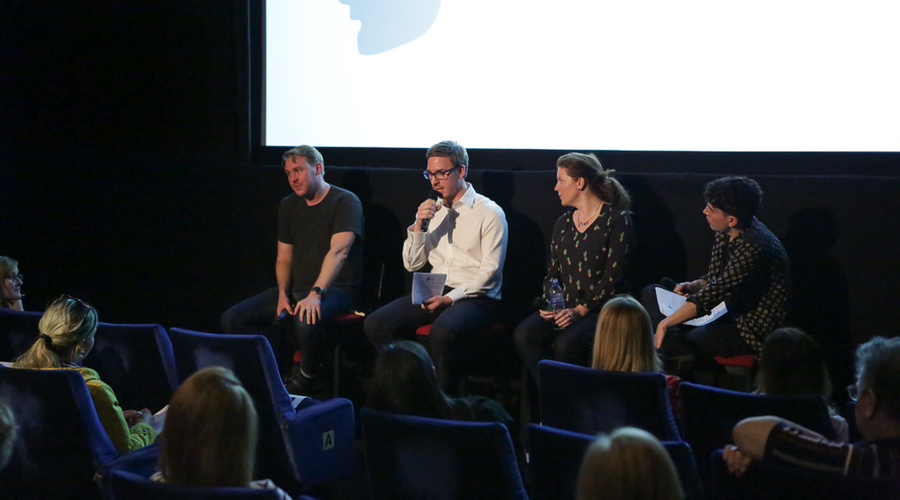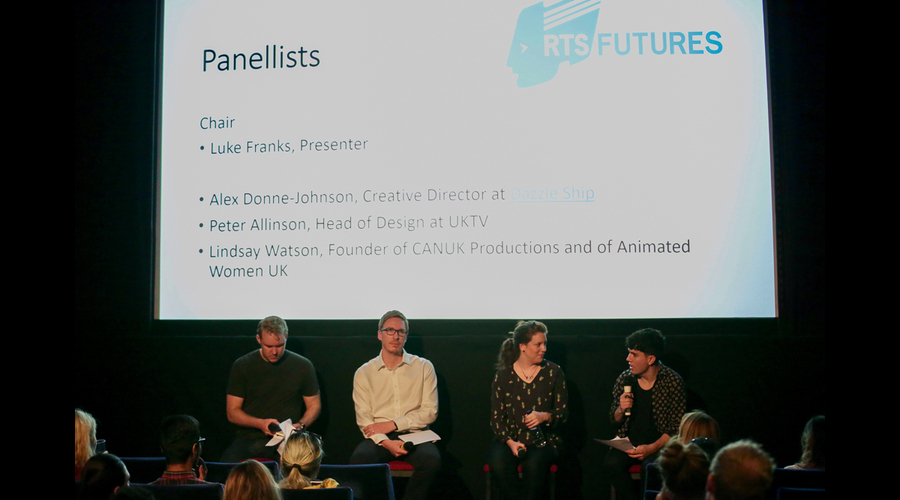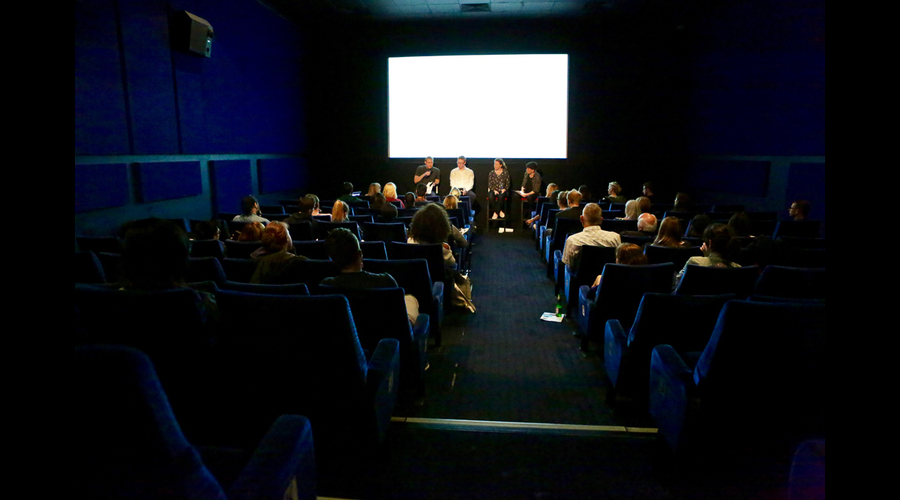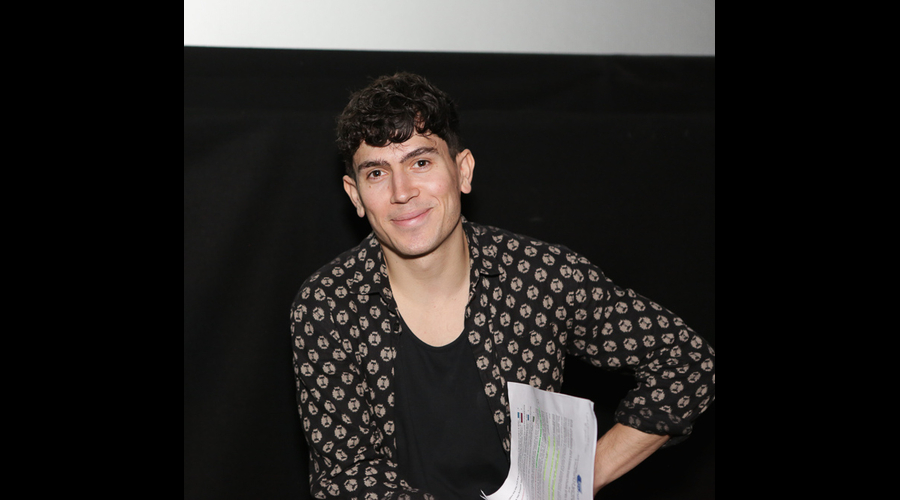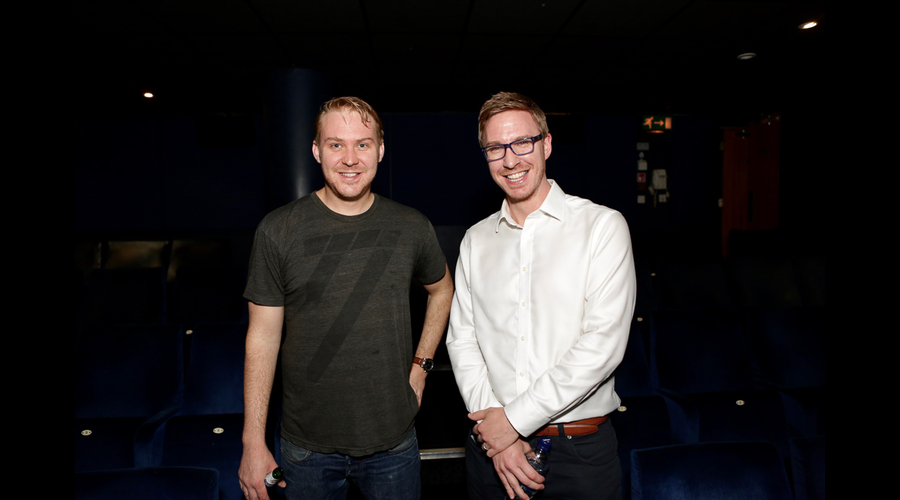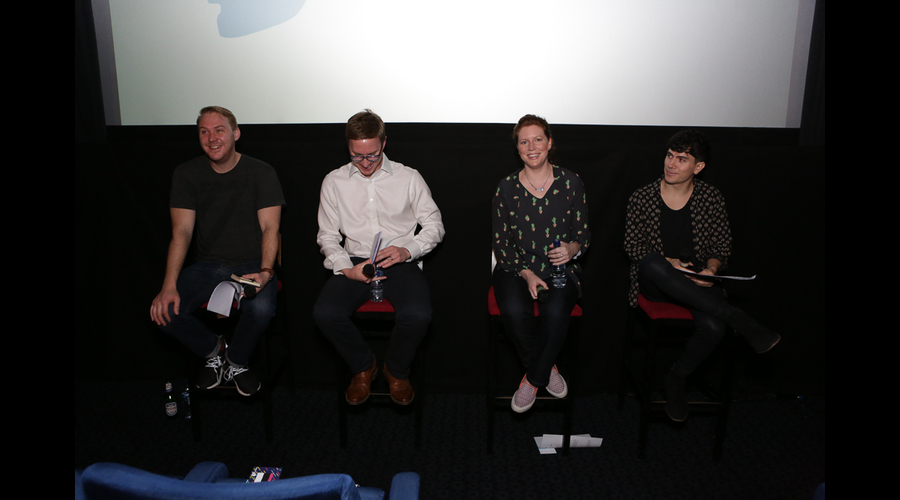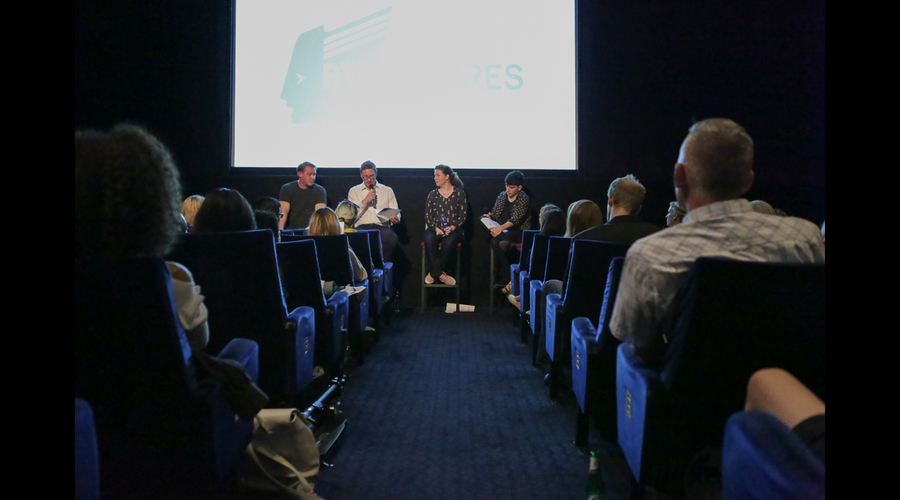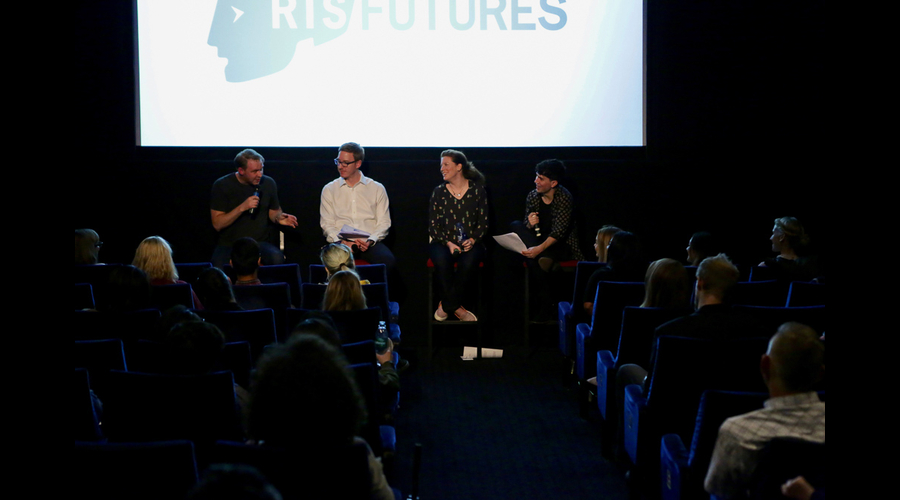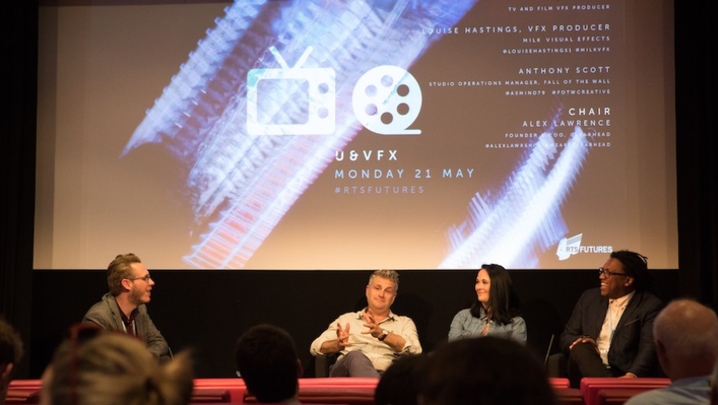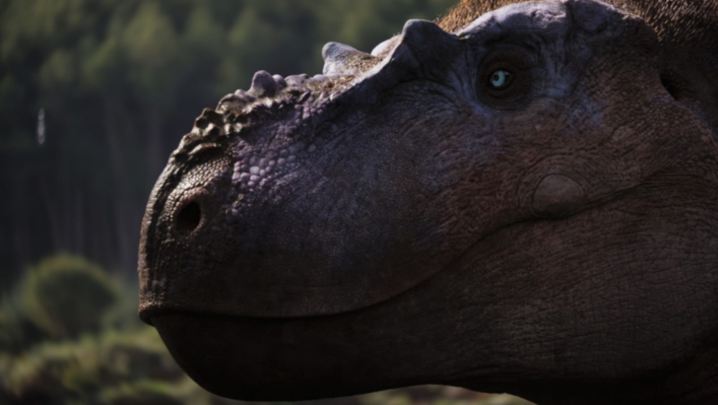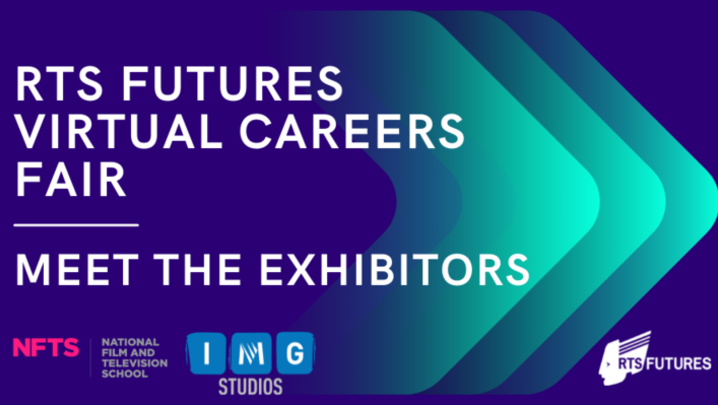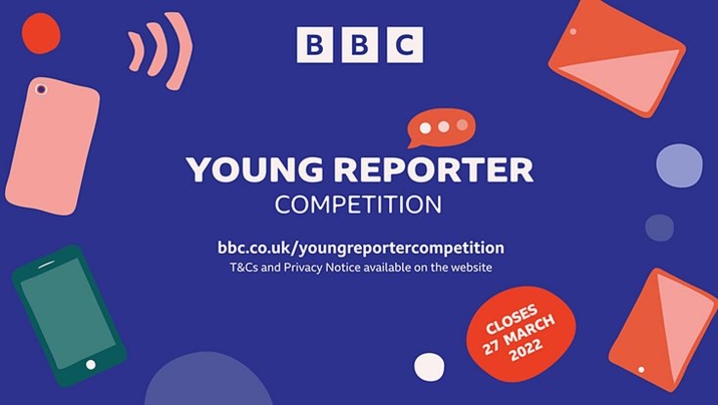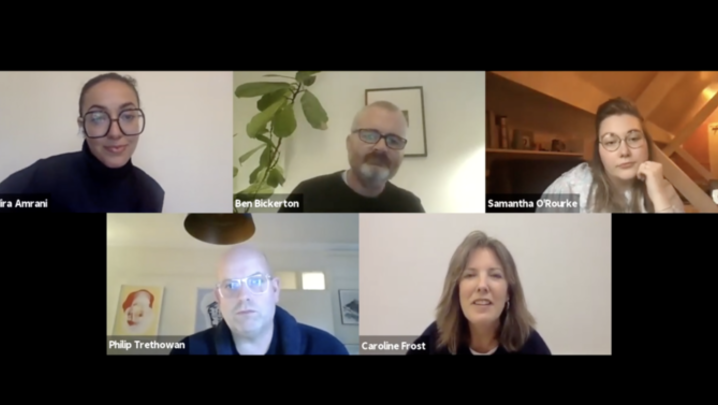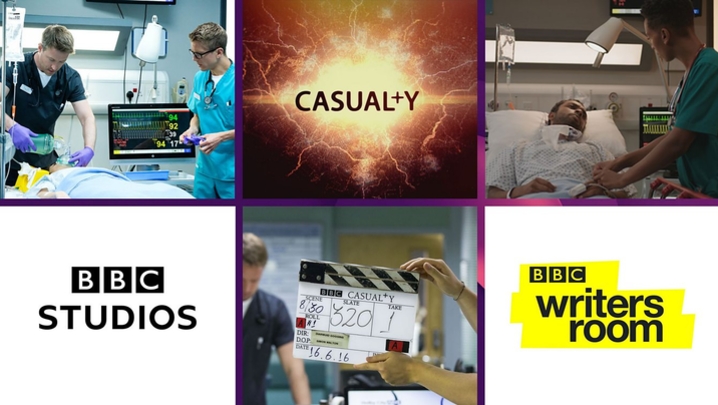The newest visual effects and animation techniques were on display at the Curzon Soho when the central London cinema hosted an RTS Futures event at the end of May.
A panel of experts in the field were on hand to show and talk about their work, as well as to offer advice on finding work in the competitive VFX and animation industry.
“As creatives, we’re all striving to come up with original, brilliant ideas and then realising them in animation,” said UKTV head of design Peter Allinson.
The UK broadcaster, whose channels include Gold and Dave, launched its own agency nearly two years ago to handle the creative work of all UKTV shows. “We are in an industry where creative teams are being brought in house pretty much across the board,” added Allinson. Among others, the BBC, ITV and Channel 4 all now have their own in-house agencies.
“In terms of client work, things are good at the moment,” said Alex Donne-Johnson the creative designer of motion design studio Dazzle Ship. “We have some pretty cool projects, which you can really get into and get lost in the creative stuff.”
Donne-Johnson admitted, however, that VFX work is time-consuming: “It can lead to a lot of late nights.”
“I love what I do, and the people I work with and the international community I’m part of,” said Lindsay Watson, the Canadian-born founder of Canuk Productions, a consultancy specialising in children’s animation. “It’s a fantastic career.”
She is also the founder of Animated Women UK, which aims to boost the profile and numbers of women working in animation and VFX. Watson told the RTS Futures event that she had seen “a lot of sexism at first hand” in the industry.
Currently, just 30% of the UK’s animation and VFX community is female, she revealed. “Most women work in production or administration – not in technical or creative roles,” said Watson.
“We’re quite a nerdy group of individuals so I think it’s time to let those geeky ladies shine,” she added.
Offering advice to an audience of mostly young people keen to build careers in animation and VFX, Allinson said: “A strong portfolio is a given.” But he added that when he was interviewing, he asks how job applicants generate and develop ideas: “In a way I find the [process] more interesting than the final outcome.”
Allinson added that interviewees should bring “something physical” with them such as a printed storyboard, rather than relying on screen-based work. “That will set you apart from everyone else,” he said.
“Stay in school.” Allinson added. Work experience, although valuable, is not as important as gaining qualifications. “It’s not just a line on a CV – those years of [studying] with your creative peers and learning the craft will really pay off in the future.”
He continued: “Although we’re discussing visual effects and motion graphics tonight, having a graphic design background is really important. You need to be able to communicate through design.”
“An understanding of design is really important – that really sets you apart,” agreed Donne-Johnson.
The creative director went on to rail against the modern tend of advertising for “rock star designers” to work on “big brands”. Donne-Johnson argued that VFX and motion graphics should be about “enjoying the work” and “not about adding a brand to your portfolio”.
“VFX and Animation: Meet the experts” was held at the Curzon, Soho in central London on 23 May. The event was chaired by Luke Franks, the presenter of weekend CITV show Scrambled, and produced by Alex Wootten and Tara Magan.


